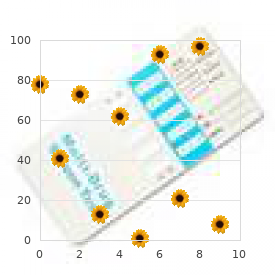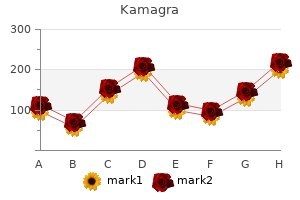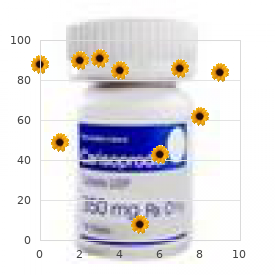"Kamagra 100mg on-line, erectile dysfunction ultrasound treatment".
By: E. Raid, M.B.A., M.D.
Clinical Director, University of Vermont College of Medicine
Depending on how fast the tumor grows erectile dysfunction treatment definition buy kamagra 50 mg without a prescription, the pressure will either increase slowly and be tolerated erectile dysfunction caused by stroke order generic kamagra on-line, or massively (ex, sudden hemorrhage) and lead to comatose. Pulsation of heart is transmitted into the great vessel then into the internal carotid artery and into the brain. It has a very wide range between 50 and 140 mmHg In trauma cases, it is preferred to keep cerebral perfusion pressure around 70. The brain only dysfunctions at a very high extreme pressure or very low extreme pressure. Mechanisms of cerebral auto-regulation: o A rise in the systolic blood pressure will cause constriction of cerebral arteries. In that area, increased pressure will increase flow and this area can bleed inside. Increase pressure in brain veins within optic nerve become congested whole optic nerve head becomes congested. The pupil dilates or constricts based on the Occulomotor nerve that comes from the midbrain in the brainstem (figure -1-), just next to the temporal lobe. A lot of pressure on the brainstem (stop breathing suddenly breathing fast again suddenly stop breathing. If you try to compress an organ that is full of water, this organ is going to shift. If there was a severe brain compression, the brain is going to shift and go through an opening such as foramen magnum which will compress the respiratory center in the brain stem and cause a fatal problem. Hemiplegia means total paralysis of the arm, leg, trunk of the same side of the body. Tentorium is a membranous cover of cerebellum the process of the dura mater supporting the occipital lobes and covering the cerebellum 4. Central herniation: If there was a hematoma or mass that compresses the upper part, it will push the whole brain down through the tentorial opening. Outside herniation: If there was a skull fracture and the pressure inside was so huge so the brain will look for the easiest way to be out. Cingulate herniation Uncal herniation Central herniation Outside herniation Tonsillar herniation 4. Sustained infection, that when you give contrast enhanced picture (big collection of pus) 9 4. Diffuse: Severe shaking of head cut of Fx Salt and pepper appearance of blood scattered around in brain Tumor: midline shift to other side, edema around it (Meningioma, Glioblastoma Multiformi). Check airway endotracheal intubation (the first thing done for unconscious patient, because if his airway was blocked he will die within seconds) B. It includes measurement of verbal response Explanation:The Glasgow coma scale was developed to enable an initial assessment of the severity of head trauma. It is now also used to standardize serial neurologic examinations in the early postinjury period. It measures the level of consciousness using three parameters: verbal response (5 points), motor response (6 points), and eye opening (4 points). An acute increase in intracranial pressure is characterized by which of the following clinical findings? The vector of the mass effect may lead to herniation of brain parenchyma through the tentorial incisura or foramen magnum with resultant brainstem compression. Herniation usually causes compression of the third cranial nerve and thus leads to a fixed and dilated pupil on that side. Figure 2: this small cut section at the level of superior sagittal sinus (which is one of the dural venous sinuses of brain) shows the arachnoid granulations, which are an extension of the arachnoid. Remember that the cause of acquired hydrocephalus is usually outside the ventricles. So the head circumference increases abnormally not according to curve of growth) Irritability, lethargy, poor feeding, and vomiting. Aim is to normalize the intracranial pressure Specially designed shunt valve with the appropriate rate of flow and pressure.



Saccharomyces cerevisiae): the inhibition of glycolysis in the presence of O2 erectile dysfunction after age 50 order kamagra online pills, manifested by the inhibition of ethanol formation and a decrease in the amount of glucose used impotence zantac cheap kamagra 100mg on-line. Pasteurellaceae A family of Gram-negative, asporogenous, facultatively anaerobic bacteria. Acid (usually without gas) is usually formed from glucose but may be difficult to detect by conventional methods. Pasteurization is lethal for the causal agents of a number of milktransmissible diseases. In Staphylococcus aureus, the gene for toxic shock toxin is carried by a mobile pathogenicity island [Mol. While denaturation and extension temperatures are generally ѕ94/95° C and 72° C, respectively, the temperature used for annealing varies widely according to the particular assay. Highstringency conditions are those which allow primertarget binding to occur only when the primer and target sequences are exactly complementary, or very nearly so. Transient cooling to 4565° C has permitted the primers shown as short, solid lines to bind (D anneal) to their respective (complementary) sites on the template strands; notice the locations of the bound primers in relation to the site of the amplicon. Note that each of the newly synthesized strands in this first round of replication is longer than the amplicon. Each new daughter strand (as well as the two parental strands) can then act as a template. In the diagram, a primer has bound to each new daughter strand and has been extended (dashed line). Note that the strand synthesized on a new daughter strand is the same length as the amplicon; such strands rapidly become numerically dominant in subsequent rounds of replication. First, amplicon containment; this involves division of 558 the working space into a number of dedicated areas each area being used for only certain stage(s) of the procedure. In one common scheme there are five designated areas, two of which are reserved for (i) cycling and (ii) analysis of products. The second approach, amplicon inactivation, can be achieved by either of two methods. For example, specimens may be diluted in order to reduce the concentration of the inhibitory substance(s); however, this also lowers the number of copies of the target sequence (if any) in the specimen and may lower the sensitivity of the assay. A distinct approach to the problem of inhibitors is offered by the use of magnetic separation techniques (see. Even when known inhibitors have been taken into account it is mandatory to include suitable controls to detect the effects of unknown/unexpected inhibitors (which may occur in only certain batches of a given type of specimen). Such products, all the same size, can be readily detected/identified by gel electrophoresis as a single band at a precise location in the gel. Typically, electrophoresis is carried out in an agarose gel, and the band of products is detected by staining with ethidium bromide and examining the gel under ultraviolet radiation. To facilitate identification, another lane in the same gel is used for electrophoresis of a set of fragments of known size. The whole is then transferred to a microtitre plate whose wells have been coated with capture probes probes complementary to a different sequence in the amplicon. Incubation at 37° C permits amplicons (if present) to bind to the (surfacebound) capture probes. After washing (to remove unbound detector probes), a substrate for alkaline phosphatase is added to detect any bound, enzyme-labelled amplicons; if present, the enzyme will cleave the substrate, and this can be detected by monitoring the optical density of the mixture. As in the previous method, the enzymic label is detected by adding an appropriate substrate and monitoring the optical density. Note that, unlike the previous method, this method does not confirm the identity of the products by specific hybridization(s). The LightCycler (Roche) is a thermocycler in which detection (and/or quantification) of products can be achieved by at least two distinct methods. Detection of products by the LightCycler can also be achieved by a probe-based format. Two types of probe, included (in large numbers) in the reaction mixture, can bind to adjacent sites on an internal (non-terminal) sequence in the amplicon. When bound, the 30 end of probe 1 (labelled with fluorescein) is juxtaposed to the 50 end of probe 2 (labelled with the dye LightCycler Red 640).

The other three extra-embryonic membranes that we should be aware of are the allantois erectile dysfunction statistics race order kamagra american express,amnion erectile dysfunction kidney stones buy cheap kamagra 50mg on-line, and yolk sac. Moving outward, we come to the yolk sac, the site of early blood vessel development. Finally, the outermost embryonic layer is the chorion, which completely surrounds the other membranes, providing an added level of protection. Chorionic villi eventually grow into the placenta and support maternal-fetal gas exchange. Last but not least, the umbilical cord is surrounded by a jellylike matrix and is the initial connection of the fetus to the mother (see Figure 5. Real World Amniocentesis is the process of aspirating amniotic fluid by inserting a thin needle into the amniotic sac. The amniotic fluid contains fetal cells that can be examined for chromosomal abnormalities as well as sex determination. Amniocentesis is recommended for pregnant women over 35, because women in this age group have a higher rate of meiotic nondisjunction, which can result in genetic aberrations such as Down syndrome. Key Concept Although the fetus obtains its nutrients and oxygen from the mother, there is no actual mixing of the blood. Instead, the placenta allows for the close proximity of the fetal and maternal bloodstreams so that diffusion can occur between them. Now that we have discussed the structural features of the organs of fetal development, we can examine how they function. The placenta is the organ where nutrient, gas, and waste exchanges occur (see Figure 5. It is crucial that there be no mixing of maternal and fetal blood, as they may have different blood types. The simplest way to move nutrients and waste products would be diffusion; in fact, this is how water, glucose, amino acids, and inorganic salts are transferred. So for oxygen to diffuse from mother to fetus, there must be a higher Poxygen in maternal blood than in fetal blood. In addition to an oxygen gradient, fetal blood cells are equipped with fetal hemoglobin (Hb-F), which exhibits a greater affinity for oxygen than does maternal (adult) hemoglobin, known as Hb-A. For fetal Hb to "steal" oxygen from the maternal/adult Hb, it must demonstrate a higher affinity for O2, which shifts the curve left (see Chapter 9). Remember that the fetus is immunologically naпve because it lacks both experience and exposure, defense-strengthening tools on which immune systems depend. Many foreign particles and bacteria are too large to cross the placental barrier by diffusion, but unfortunately, viruses. Fetal Circulation Several key differences between fetal and adult circulation serve important functional roles in the developing organism. In addition, since fetuses are suspended in aqueous amniotic fluid, there is no air for the lungs to take in. Oxygen must come from maternal circulation and, therefore, diffuse through placental vessels. The first, called the foramen ovale, connects the right and left atria, with the intent that blood entering the right atrium from the superior vena cava will flow into the left atrium instead of the right ventricle so that it can eventually be pumped out of the aorta into systemic circulation. The right atrium, because blood will travel spontaneously down the pressure gradient. This gradient is reversed in adults, so the foramen ovale must be shut after birth for the adult heart to function properly. The ductus arteriosus is present to shunt leftover blood from the pulmonary artery to the aorta. It works for the same reason that the foramen ovale does: the pressure in the right fetal heart is higher than that in the left. If blood continues to be shunted from the right side to the left (as it was in utero), the neonate will turn blue, because the deoxygenated venous blood bypasses the lungs and mixes with the oxygenated blood being pumped to the body through the aorta.

Syndromes
- Supervise children carefully. There is no substitute for close supervision no matter how safe the environment or situation appears to be.
- Choriocarcinoma (a type of cancer)
- School-age children should participate in family chores such as setting the table and cleaning up.
- Chromosome studies
- Problems with thinking or confusion caused by small strokes
- Thyrotoxic periodic paralysis
- Spread of the cancer to other body areas (metastasis)
- Does the bleeding always occur on one or both sides?

Most famously erectile dysfunction pump medicare discount kamagra 100mg on line, leeches were used erectile dysfunction even with cialis purchase kamagra 100 mg free shipping, especially in the early 19th century, to draw out the excess blood. In fact, in the early decades of the 1800s, hundreds of millions of leeches were used by European physicians; in the 1830s, France alone imported about 40 million leeches per year for medical treatments. Now, before you start feeling superior to these "primitive" doctors and their "barbaric" medical practices, you should be aware that although the humoral theory has been completely discredited by modern medical research, some practices associated with humouralism are still being used, albeit based on very different medical understanding and for very different purposes. For example, new research has shown that medicinal leeches can be used effectively in microsurgery, where they help prevent blood coagulation, and in reconstructive surgery, where they help stimulate circulation to the reattached organ. We will review the structures and functional anatomy of the cardiovascular system and then discuss blood and its functional components. Electrically excitable cells, whose connections we will outline, initiate and spread contractions throughout the heart. In addition, the ability of oxygen and carbon dioxide to bind to hemoglobin will be detailed, including a discussion of the factors that may affect this binding. Anatomy of the Cardiovascular System the cardiovascular system consists of a muscular four-chambered heart, blood vessels, and blood. In casual observation, we usually think and speak of the heart as a single pump, but actually it is two pumps connected in series (analogous to a circuit with two batteries in series). The right pump (the right heart) accepts deoxygenated blood returning from the body and moves it to the lungs by way of the pulmonary arteries for oxygenation. The left pump (the left heart) receives oxygenated blood from the lungs by way of the pulmonary veins and forces it out to the body through the aorta. The atria are thin walled, and you can think of them as the lobbies or waiting rooms for each side of the heart: Blood is received (from the body or from the lungs) in the atria before it is moved to the ventricles, which are more muscular because they do the actual work of pumping the blood out of the heart (to the body or the lungs). We can follow the path of blood through the left and right sides of the closed cardiovascular circuit by picking any place within the circuit as our starting point (see Figure 9. If we begin, say, in the left atrium with oxygenated blood, then we can follow the blood as it moves to the left ventricle and then into the aorta, the largest artery in the body. Major arteries, such as the coronary, common carotid, and renal arteries, divide the blood flow from the aorta toward the different peripheral tissues. Arteries branch into arterioles, and these ultimately lead to capillaries, which perfuse the tissues. On the venous side of a capillary network, the capillaries join together into venules, which join into veins. Blood then moves into the right ventricle, which pumps the blood to the lungs via the pulmonary arteries for gas exchange. Finally, blood leaves the lungs through the pulmonary veins and goes to the left atrium, where we started. Each of these networks has a special purpose and is referred to as a portal system. A hepatic portal system (see Chapter 7) connects the vasculatures of the intestines and the liver, and a hypophyseal portal system in the brain connects the vasculatures of the hypothalamus and the pituitary gland (see Chapter 12). Bridge the heart and blood vessels are analogous to a pair of batteries that are linked in series. The right heart is a low-pressure system (like a low-voltage battery) that sends blood to the lungs, whereas the left heart is a high-pressure system (like a high-voltage battery) that sends blood to the body. A delicate balance exists between the supply of oxygen to the heart (coronary blood flow) and the myocardial oxygen demand. The most common clinical manifestation of this condition is a type of chest pain called angina. If this ischemia goes on unchecked, parts of the heart muscle may become irreversibly damaged. Although there are many possible causes for decreased coronary blood flow, the most common by far is atherosclerosis of the coronary arteries (the formation of a plaque composed primarily of cholesterol). The heart is a muscular organ a little larger than your fist, weighing between 7 and 15 ounces. Located between the lungs, it lies behind and a little to the left of the sternum, and it is tilted ever so slightly so that the exterior wall of the right ventricle forms the base of the heart.
Buy genuine kamagra online. 3 Home Remedies for Erectile Dysfunction - Cure ED without drugs.

